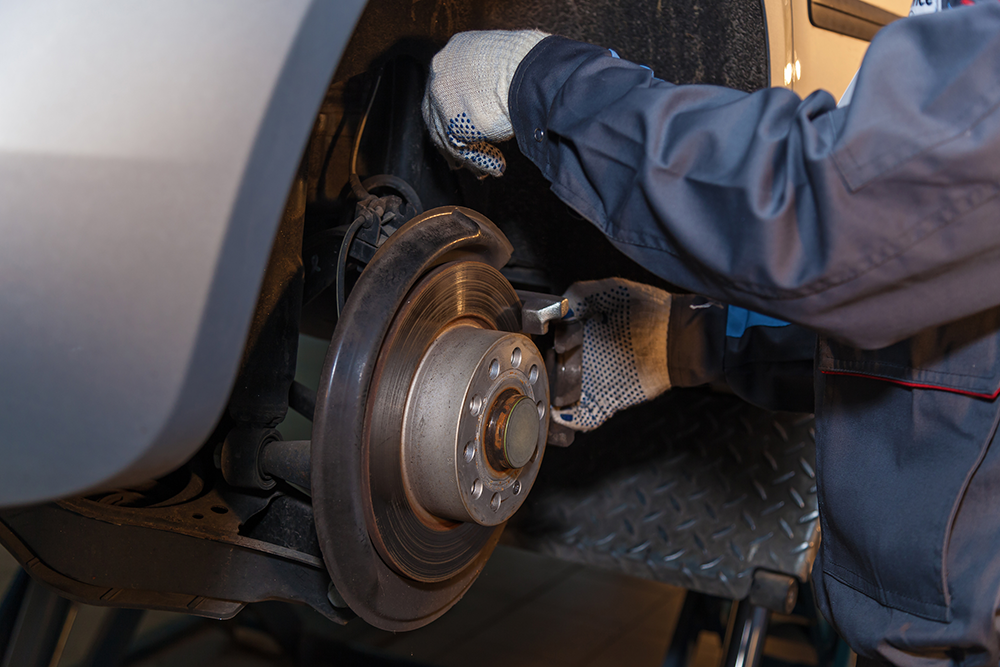Telltale Signs Your Vehicle Needs Brakes

Your vehicle was designed to send out signals when it’s time for basic maintenance. Listening for warnings about brake safety makes the difference between brake pad replacement and expensive brake system repair.
Do you hear a high-pitched chirp or whine whenever you apply pressure to the brake pedal?
It’s time to get a brake check-up. Brake pads are designed to create a high-pitched noise when they need replacement.
Do you hear a squeal or scraping? Experts recommend getting brakes inspected immediately. The sound you hear means your vehicle may be in danger of brake failure.
But there’s good news. Routine services keep you on top of your brakes’ condition, allowing you to anticipate (or even avoid) expensive repairs.
“A good visual inspection is the only preventative maintenance there is,” said Tim Beachboard, owner of FedHill Brake Line, a Massachusetts-based brake line supplier.
Brake care is vital to vehicle safety and experts suggest servicing your brakes at least once a year. Technicians typically assess the brake fluid level, the brake line itself and various other components during a brake inspection.
A glossary of common brake terms is outlined below:
*Brake fluid. Stopping a car depends on hydraulics, and brake fluid is literally the system’s lifeblood. Pushing the pedal forces fluid through the lines, forcing the braking components into action, stopping the vehicle.
How often your brake fluid needs to be replaced depends on a number of factors, such as your driving habits and environmental variables like heat and humidity. Most vehicles don’t offer gauges or sensors to track brake fluid. So having your fluid inspected by a certified auto mechanic is crucial.
*Brake pads. Made from a variety of metals, brake pads squeeze the rotor whenever the brake pedal is pushed. Brake pads typically last between 20,000 and 40,000 miles, perhaps much longer with high quality brake pads.
But even if you aren’t watching the odometer closely, brake pads are designed to alert drivers when they’re wearing thin.
Listen for a squealing or chirping while stopping, otherwise you could do serious damage to your brakes. Paying attention to and acting on cues like these help keep routine services from mutating into major repairs.
*Calipers. Part of a disc brake system, calipers push the brake pads against the rotors when the brake pedal is pushed. This resulting friction between the pads and rotors slows--and ultimately stops--the vehicle.
Waiting too long to replace worn brake rotors puts extra stress on the calipers. The calipers will rub against uneven rotors if the components aren’t parallel to one another, creating a vibration in the steering wheel during stops.
*Drums. These bowl-shaped components use springs to expand the brake pads against the inside of the drum. This style of brakes is typically found on the rear of trucks or sedans. While it produces brake dust, the majority of it hides behind the covering, which means less gunk on the rims.
The brake drum is typically made of cast iron that conducts heat and is resistant to wear.
“Drum brakes are cheaper and take less hydraulic force to activate. When you stop your car most of the braking is done by the front brakes because of weight transfer--why you feel pressed towards the front when you hit the brakes,” said Nathan Kaemingk, a technical specialist for Cummins, Inc. “Drum brakes are more susceptible to warping and brake fade. They're worse at cooling, and more likely to need cleaning and adjustment for optimal operation than disc brakes because a lot of the dust from brake shoes stays inside the drum.”
*Rotors. As the name implies, these metallic discs rotate as the wheels are in motion. Pressing the brake pedal activates clamps on both sides of the rotor.
Friction created by braking produces searing heat that eventually scars the rotors. While they can be resurfaced, rotors eventually reach a point where replacement is the only option.
Rotors should be checked during a tire rotation or multipoint inspection.